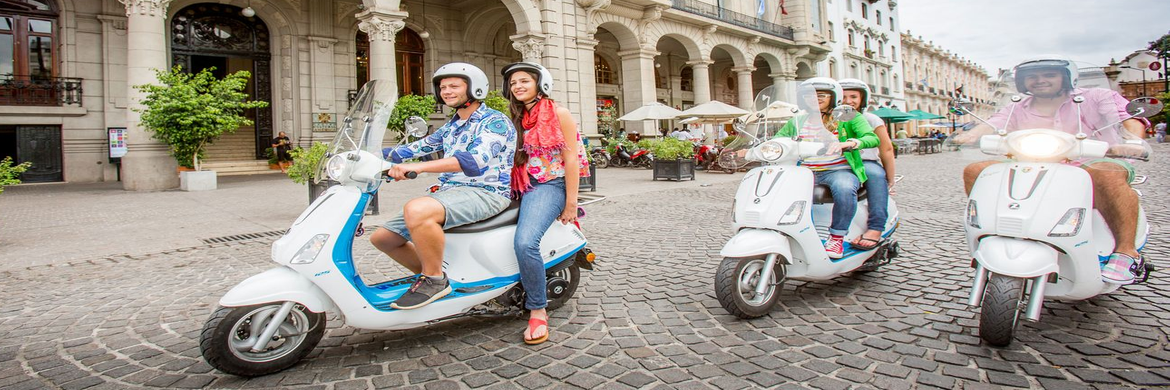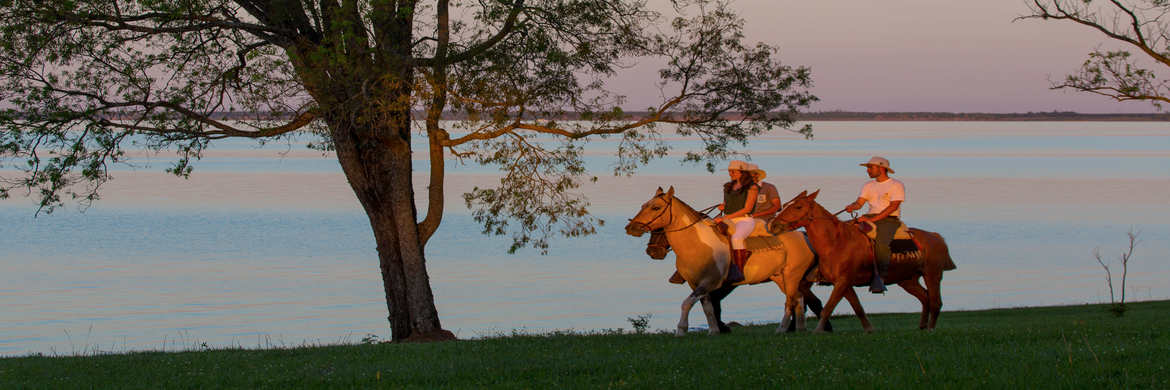Argentina Escapes
Argentina is a massive South American nation with terrain encompassing Andes mountains, glacial lakes and Pampas grassland, the traditional grazing ground of its famed beef cattle. The country is famous for tango dance and music. Its big, cosmopolitan capital, Buenos Aires, is centered on the Plaza de Mayo, lined with stately 19th-century buildings including Casa Rosada, the iconic, balconied presidential palace.
Argentina extends its territory in almost 3.8million km², which are divided into continental areas (2.8k million m²) and Antarctic area (about 1 million km²). The country is 3.800km long and is located between latitude 22º and 55º. Argentina borders with Uruguay, Brazil, Paraguay, Bolivia and Chile has a perimeter of 9,376km, while the territory bordered by the Atlantic Ocean is 4,725 km long. Argentina is divided into 23 provinces, with a total population of about 42 million inhabitants. Most of the populations live in Buenos Aires, the capital of the country. Argentina is the eighth-largest country in the world, the second-largest in Latin America, and the largest Spanish-speaking one.
Considering its geography, it is important to mention the big contrast offered by the immense eastern plains, and the imposing mountain range on the Andes in the west border with Chile, where Argentina has the highest peak of South America, the mount Aconcagua with 6959mts. Height. Although the most populated areas are generally temperate, Argentina has exceptional climate diversity, ranging from tropical in the north to sub polar in the far continental south.
Argentina’s climate is generally temperate but there are major regional variations due to its size – from the extreme heat of the northern regions, through the pleasant climate of the central pampas, to the sub Antarctic cold of Patagonia’s glacial regions. Throughout the country January is the warmest while June and July are the coldest. The mean annual temperature in Buenos Aires is 23C, in the extreme north of Argentina can get up to 45C.
BUENOS AIRES
Buenos Aires is one of the largest cities in the world. It is also the most elegant and cosmopolitan city in South America, which represents the Argentine essence. In spite of its modern construction and dynamic activity, it has manages to preserve old traditions and charming corners. Visitors are fascinated by its environment, the individuality of each of its neighborhoods, the cordiality of its people, and its wide selection of cultural and shopping opportunities. The city has important museums as well as numerous cultural centers and art galleries.
IGUAZÚ FALLS
In the Northeast of the country, in the border with Brazil you will find the most overwhelming falls in the world. The Iguazú River plunges into a gorge of over 275 falls along 4km completely surrounded by a dense tropical forest. There are 3 different circuits in the Argentinean side. The Upper, the lower and the Devils Gorge, all connect by a panoramic train. From this side you will feel breathtaking sensations between the water and the forest.
SALTA
Northern provinces feature traces of pre-Columbian cultures, mingled with ruins of native’s villages, as well as forts and constructions back to the time of the Conquest and Colonization. Time seems to stand still in the high plateau of the Puna, a land full of mountain ranges, steep mountain paths, and gorges. Villages have been built in the small valleys. The region offers landscapes full of contrast for tourists to enjoy, from the high peaks to the plains, the salt pans, where Latin American culture took root.
MENDOZA – The Wine Region
This is a region of the high peaks, unknown land covered by colorful deserts, the snow-covered volcanoes, and the large wilderness spreading from the Andes mountain range and foothills to the steppe. In the valleys of Mendoza, among leaves of grapevines, farms and wineries, visitors can go along the Wine Road, an attraction of international renown.
BARILOCHE – Lake Region
Bariloche is the second most visited destination in the country. The city sits in the center of Nahuel Huapi National Park and is fronted by an enormous, irregularly shaped lake with the same name as the National Park. Bariloche´s grand appeal is in its many outdoor activities, sightseeing drives, boat trips and great restaurants. Visitors could easily occupy themselves for a week, regardless of the season. A must to see!
CALAFATE
Breathtaking landscape of impressive glaciers descending from the continental ice fiels. Thirteen glaciers of the Atlantic side brake into huge ice towers which plunge into the waters of lakes Viedma and Argentino. For sure of one of the greatest attractions in a country which is itself a great attraction. Los Glaciares National Park is a protected area and is the southernmost part of the Argentine Patagonia. Limiting with Chile on its west side it has a surface of 115,000 has., covering a representative mix of the Patagonian Steppe and the humid Subantarctic Forest. Only the east side of the park is accessible with vehicles, the rest is not open to the public in order to guarantee the highest level of protection.
USHUAIA
The city at the end of the world; the town of Ushuaia lies on the shores of the Beagle Channel; a community which depends variously on fishing; heavy industry and tourism for its livelihood. Founded in the late 1800s; it is the capital of the desolate; sparsely-populated; mountainous and windswept triangular island of Tierra del Fuego which lies to the south of the Magellan Straits. Ushuaia was one of later regions to be settled by immigrants; originally home to the kayak-paddling Ona and Patagon Indians who hunted seal and fish and daubed themselves in seal-fat during winter to ward off the sub-zero temperatures. The first settlers were missionaries who built simple wooden dwellings on the water’s edge to house their families; not so different from the wooden Scandinavian-style houses which line the main street of Ushuaia today.
- The biggest fish – Explore untamed nature and wild outdoors with exquisite destinations and uncharted terrain.
- Kaleidoscope imagination – Through this experience, explore South America’s color, moods, and vibes– alternating cities and transportation.
- Gardens at first light – Get unprecedented access to Argentina’s most exquisite private gardens, exploring the local fauna and this rich and colorful array of flora.
- Artists Unframed – As part of this experience, we will visit artist studios all across the country, visiting private home collections and closed viewings at art galleries.
- By the Lake – Calafate takes its name from an abundant thorny shrub found in the southernmost area of Argentina’s Patagonia. Initially, the Tehuelche Indians lived in Calafate taking refuge in the leafy forests and subsisted through the cold winters by using this bush as firewood.
- Ice and snow – The experience include a visit of huge sheep ranches and by the foothills of Mount Frias as we enter the Glacier National Park. Winding through forested hills we will suddenly be awed as we reach the Curve of Sighs, with the sight of the Perito Moreno Glacier ahead of us, descending like a long white tongue through distant mountains, and abruptly ending in a translucent blue wall.
- Trekking – Mini –trekking over the Glacier (a 1-hour walk, easy but not for the fainthearted): We will take a short boat-ride across the Rico fjord of Lake Argentino, navigating among iridescent icebergs and sighting the towering ice walls of the Glacier. Be awed by enormous ice slabs calving off the 200-foot-high, 3-mile-wide Moreno Glacier, and falling ice-blocks with thunderous noise into the lake.




